People
‘I Always Agree With Whatever People Say About My Work’: How Artist John Armleder’s Brushes With Death Made Him More Laid-Back
The artist is the subject of major retrospectives in Geneva and Aspen, as well as other shows around the globe.
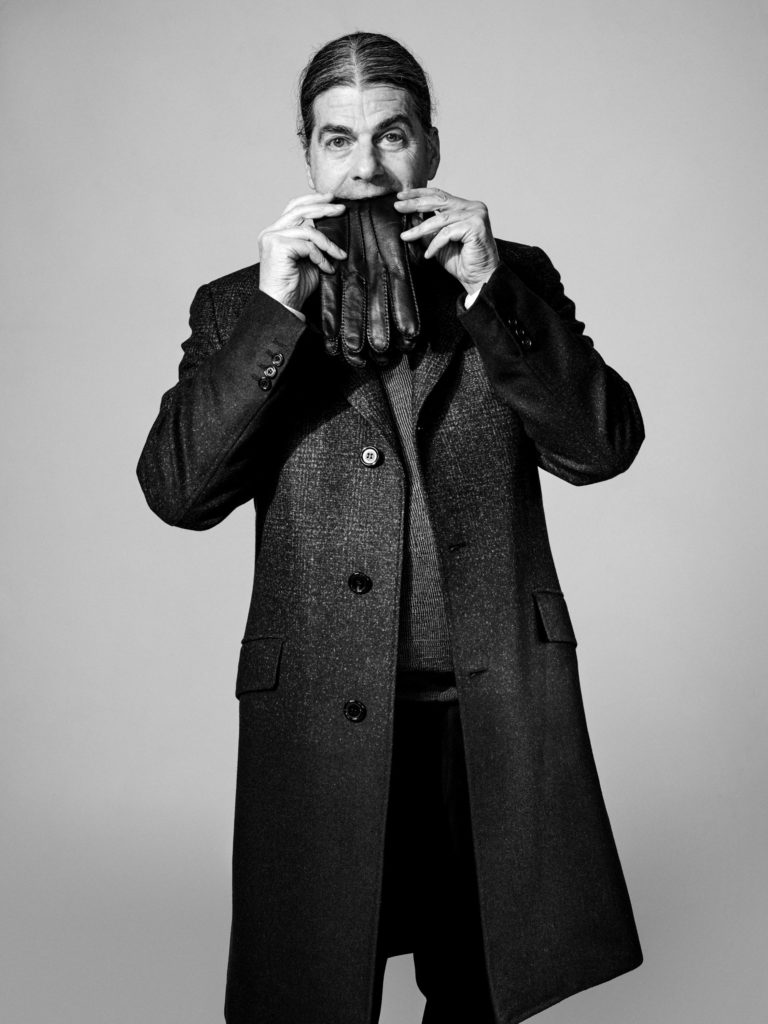
The artist is the subject of major retrospectives in Geneva and Aspen, as well as other shows around the globe.

Naomi Rea

John Armleder is having a busy summer. Both the Modern and Contemporary Art Museum in Geneva and the Aspen Art Museum are offering up retrospective looks back on the Swiss artist’s storied career. Meanwhile, despite mounting health concerns, the 71-year-old Armeleder is still making new work, some of which is being shown at David Kordansky Gallery, Los Angeles, and at the Schirn Kunsthalle in Frankfurt. Together, these exhibitions constitute the largest ever reassessment of Armleder’s oeuvre.
Long before Armleder became a founder of the influential Groupe Ecart, which introduced Andy Warhol to Europe, he spent seven months in prison as a conscientious objector refusing to take part in Switzerland’s mandatory military service. Then, after studying at the Swiss École des Beaux-Arts, he joined an enthusiastic group of young artists and played a pioneering role in the development of the Fluxus movement of the late 1960s.
The Swiss artist represented his country at the Venice Biennale in 1986, and the following year he participated in documenta 8 in Kassel. The avant-garde musician John Cage and his “chance operations” influenced Armleder in many ways, from his iterative performance work of the 1970s and ‘80s through his iconic furniture sculptures and the pour paintings and puddle paintings of later decades.
Armleder had a near-fatal brain tumor removed in 2009 and he had just come out of the hospital after some resulting complications when we spoke recently about his world view, and the big season coming up.
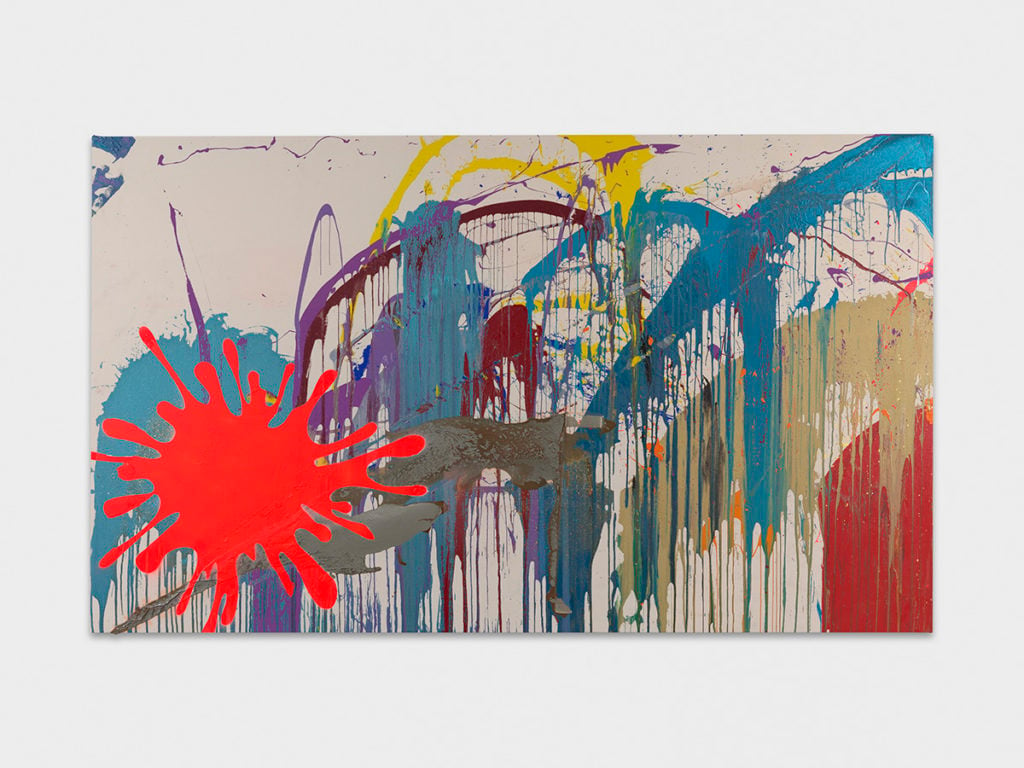
John Armleder, Passion Z (2019).Photo by Annik Wetter, courtesy of David Kordansky Gallery, Los Angeles.
Welcome back. I know you have been out of commission for a while. How are you feeling?
I am perfectly OK. It’s behind me for now. You never know what’s going to happen. It was an outcome from this thing years ago which was very critical. I shouldn’t be on this planet anymore but somehow the other planets didn’t want me so they sent me back.
You have a busy summer ahead of you with these four shows, two of which are career retrospectives. What do you think about the selection of works that have been made to represent the trajectory of your career thus far?
Once you get to my age you have no idea of where the trajectory went and where it was supposed to go. So I always like working with the people who put up the shows. They have their idea, their reading, and we work together on it, and it’s just one more reading. So I think it’s OK.
What do you hope comes out of this reassessment of your career? Is there anything you think remains to be said about your work that hasn’t been said already?
There is no end to what you can say about anything. I don’t think I’m in a peculiar position, it’s just what happens. It’s somehow bound to be that, when you’ve been around so long, things come and go and are reassessed in a new context.
Today, compared to when I was younger, there is more of everything, and I think everything is much faster and more immediate. So that offers a very different perspective on what you do, which is interesting. It doesn’t mean it changes much, because as I like to say, the more things change, the more they are the same.
What do you think about the way the world has changed—the world in general and the art world specifically—in your time?
What is surprising is that it hasn’t changed much, what is also surprising is that memory loss is extremely present. If you think about it, World War II was yesterday, and we think of it like it was five centuries ago. And it doesn’t stop people becoming more and more so-called “populist.”
This is a big danger of our time, and it must be reflected in our art as well. It is amazing how people forget about the danger of collective society when they don’t remember the mistakes they made yesterday, and they’re ready to repeat them again. So in that sense I think we live in a very scary time.
This is perhaps more evident to someone like you, who came out of a generation of artists that were coming from this post-war period where there was a feeling of liberation and freedom, right?
Absolutely. Yeah, exactly. I’m a postwar kid, meaning: I’m a semi-hippie, semi-anarchist, semi-left-wing guy, who thought we were making a new world. And of course it didn’t happen in that sense, although we had a few festive moments, but they were moments. It is amazing how memory obliterates so many things. And now again we are afraid of migrants in Europe, and we forget that not so long ago we were all migrants.
Do you think that art still has the same role to play in society as it did when you first started making work?
The first thing is we are not exactly sure of what role it was playing, so it is difficult to know if it is the same or not. There is more of everything. So a young artist today has a much harder time than we did to frame their decisions, and their past, and all that they care about, because there is so much of everything, and things are so equivalent. In my days there were no art fairs, and then there were a couple of art fairs; there was only ten or so museums that showed living artists. There was two biennales or three… Today there’s a lot of everything.
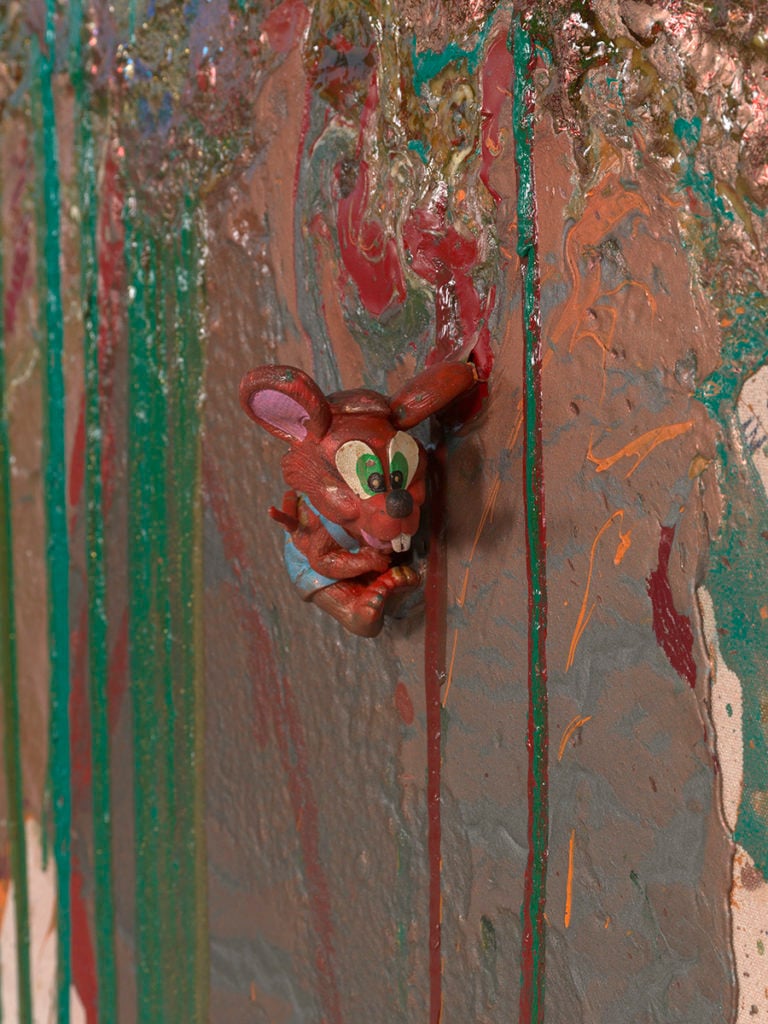
John Armleder, detail of Quibble(2018). Photo by Annik Wetter, courtesy of David Kordansky Gallery, Los Angeles.
If there’s one thing that has come to define the yearly cycle of the art world now, it is this relentless onslaught of fairs. I know that you’ve been coming to Art Basel since 1980 and have observed that shift. What do you think about it?
It is reflective of the whole scene. Art fairs are like the internet: They make everything available in one go. The only thing is that, since people like them, they tend to reproduce them, and they end up not even going to museums and galleries anymore because they have everything in a sort of a slide display one time, and they don’t even have time for doing the other things.
On the other hand, what’s interesting is that many galleries do all the activities and art fairs, which leaves them extremely free to do whatever they want in their gallery spaces. Then the galleries are either just storages, or they do shows that they otherwise would have never done because they don’t think of them in a commercial way at all, because that activity has been displaced to the art fairs. So like everything it brought restrictions on one hand, but also freedom on the other.
I think one conversation that people are having a lot more about the art market these days is about the escalation of prices and the increasing consideration of art as an investment. How do you think that is going to play out?
The truth is I’m not sure it’s so different. If you look at the Renaissance in Italy, people were fighting to get an artist in their compound exactly as they are today to get an artwork which is credited in the press or the news. So, it is different because these quantities are different, and it’s a wider society which is concerned. Before it was a little group of people, then when I was young it was a slightly bigger group, and now it is a huge group of people. But still, if you think about society in general, it is a minority. The art market concerns so few people if you think about the whole set of people on this planet. I mean who on the street knows about an art fair?
There have been a lot of questions in the museum world about how to diversify and expand audiences, and some are questioning the museum format itself. What do you think museums and exhibition spaces should be doing to invite more people in to experience art?
Well, the first thing is that formats which were reserved for so-called kunstvereins or kunsthalles before are now available to museums. Of course a museum is better known for the fact that it offers a collection and does exhibitions of that collection. A kunstverein has no collection usually, so that makes it different. The thing is that the museum has a function of reflecting its time and the discussions there are in that time, meaning others which were not in the given frame are more in the program today than they ever were, meaning non-white, non-male artists. It is about time. It took so long for that to happen. In my days it was just little groups of people who could voice their position on that but there was no real direct effect. I think today people in major established museums have discussions about that so that’s one thing I must say that I believe the discussions which are going around have a real effect that hopefully will change their perspectives.
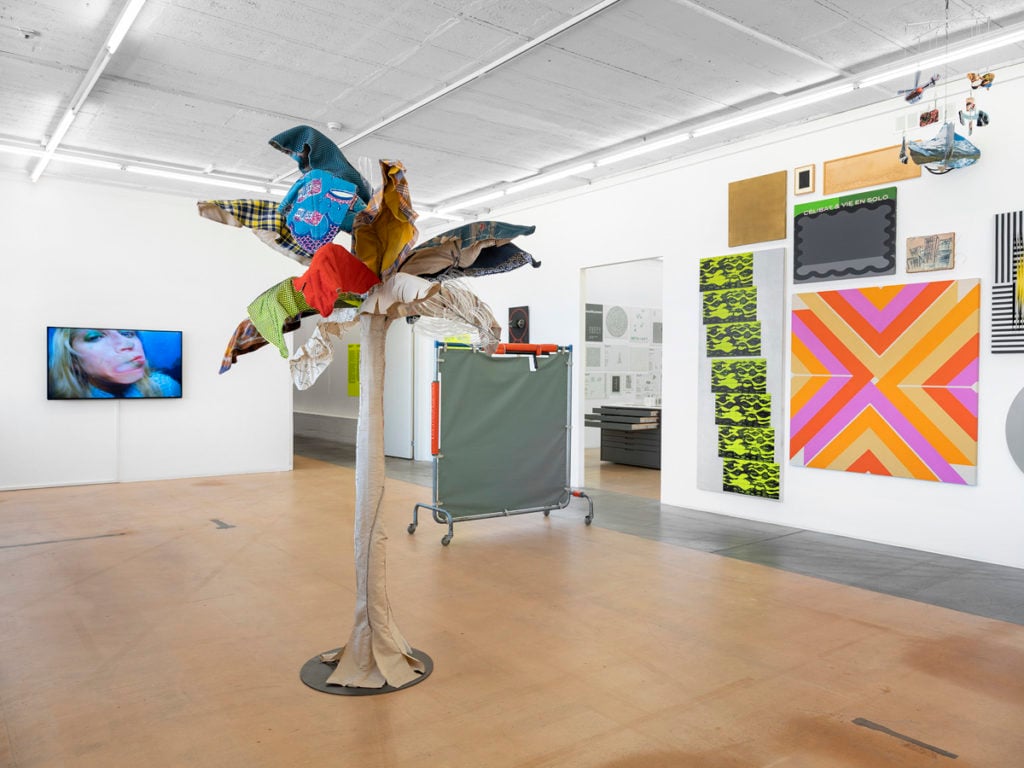
Installation view, “Ecart at Art Basel” at MAMCO, Geneva. Photo by Julien Gremaud, courtesy MAMCO.
Whenever you have in the past had a curatorial hand in your own shows you’ve used that opportunity to invite other artists into your exhibitions. Why do you feel it’s your responsibility to share your platform with artists who might not have made it on their own?
Certainly the booth we have at the Basel art fair was always about showing artists which were not, for one reason or another, represented in the gallery scene. A lot of them have turned out to be major players in the art world, whereas we don’t know who others are anymore. And that’s just normal.
But I always liked the position I had at the Basel art fair. I don’t know how they let me in for so long because on top of the fact that I’m not a commercial gallery, I don’t even have a gallery anymore. We used to have a cooperative gallery in the ‘70s, but now we don’t even have a permanent space. The other thing is of course that when I sell artwork, which strangely we do quite often, we give the total amount of the money to the artist, or with someone like [the late] Gustav Metzger, to the estate.
Some galleries say “that doesn’t work, it’s going to break our whole system” because they capitalize on sales, but they’re just happy to keep me there as an exotic figure I guess. They’re happy to have a counterpoint which is in a way not so effective because it’s just a table and a few artworks so it doesn’t count. Many artists just hate art fairs, but I never thought it was better or worse than the other things we attend.
It’s interesting to hear you say that you don’t think it’s better or worse because I know that in your career you have been seen as a kind of disruptive force in the art world, with wanting to challenge distinctions between high and low art, for example. Do you still think that way?
Certainly. I mean I come from that John Cage, Fluxus, Happening kind of thing anyway so that never really leaves you. I am as happy today to show on the sidewalk as in a museum or whatever. I see it like that. The thing is, I’m not obsessive. I mean maybe when you’re younger you’re more aggressive in making your point. I’m old enough, I almost died a couple of times, so I see things maybe in a different kind of perspective. I always knew that we do art to change the world, but the world changes by itself without art. It’s important as a human being in society to recognize that people can do without you so easily.
Who are the artists you are enjoying most these days, whether historical figures or new names?
It’s difficult to say. There’s so many. Also because I’m older, and because I’m no longer teaching, and I am a bit handicapped by my health situation, I see fewer of the younger artists than I used to maybe 15 years ago. I had the chance to live with two fantastic artists, Sylvie Fleury and Mai-Thu Perret, and that probably changed my life because they brought me visions that maybe I would have never had if I hadn’t lived with them. Today of course there is a limit to the brain and I always say that maybe I don’t have a brain anymore. There’s so much you can record and it’s sort of difficult to speak definitively in the kind of way you would do when you’re in your 20s or 30s.
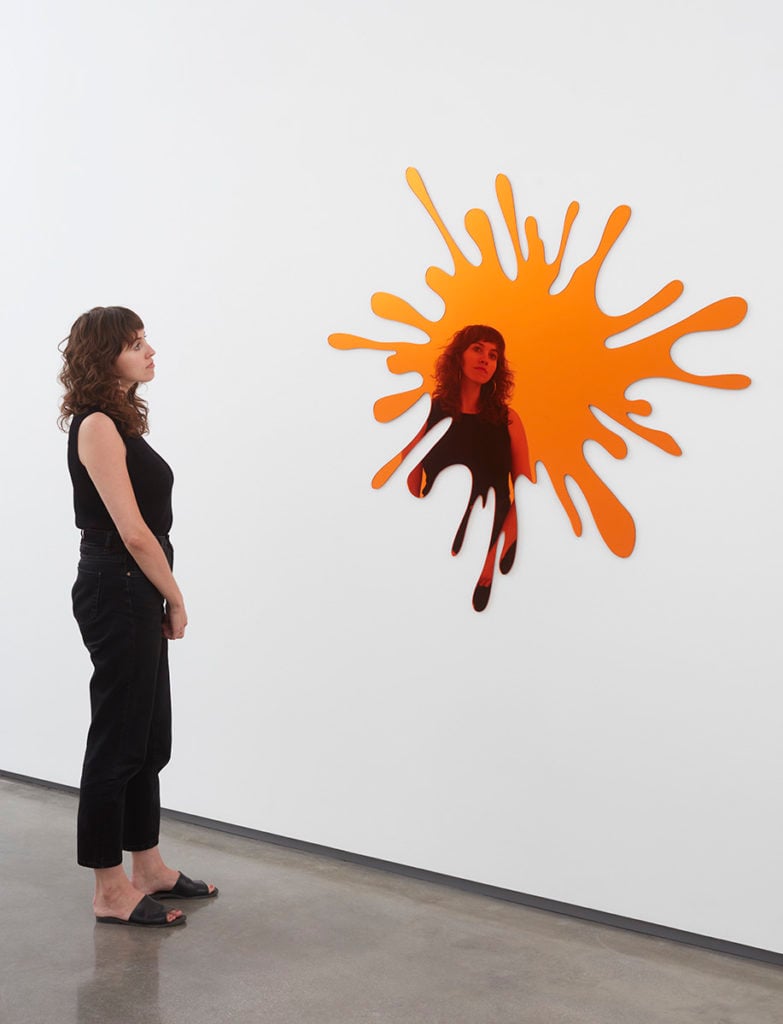
John Armleder, installation view of Lash VII (2019). Photo by Lee Thompson, courtesy of David Kordansky Gallery, Los Angeles.
Is there anything that you your own work might spark in someone else, perhaps a call to action or a vision? And with the new work that you have been making, do you see it as a response to these worrisome new currents in society?
I comment very badly on my own work. It’s difficult because as soon as you say things like that you end up being sort of a priest, which would disturb me. But I think that whatever you do helps your awareness, and if it helps your awareness you share it, and sharing is the basic reason for why you put your work into a public situation. People who own your work give it whatever meaning it has for them, and I have no idea what that meaning might be in their case. And after all we’re here for a brief time on this planet and for better or worse your work hangs around longer and it will be read in a different way with a vocabulary you just don’t have. But I try to make my work as open as possible, and I always agree with whatever people say about the work, whether it’s my text or not. As a matter of fact, you may know that I have written a lot about my work under other names, or even have had conversations with people who were in fact me, so I can say two different things about the same thing or contradictory things about the same thing.
“John M Armleder” is on view through September 1 at the Schirn Kunsthalle in Frankfurt.
“John M Armleder: Quicksand 2” is on view through September 8 at MAMCO in Geneva.
“Ecart at Art Basel” organized by John M Armleder and Lionel Bovier, with Paul Bernard, Sophie Costes, Julien Fronsacq, Elisabeth Jobin, and Mai-Thu Perret, is on view through December 31 at MAMCO in Geneva.
“John Armleder: Sh/Ash/Lash/Splash” is on view through August 24 at David Kordasky Gallery in Los Angeles.
“John Armleder: Spoons, moons, and masks” is on view through October 27 at the Aspen Art Museum in Colorado.